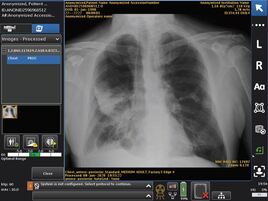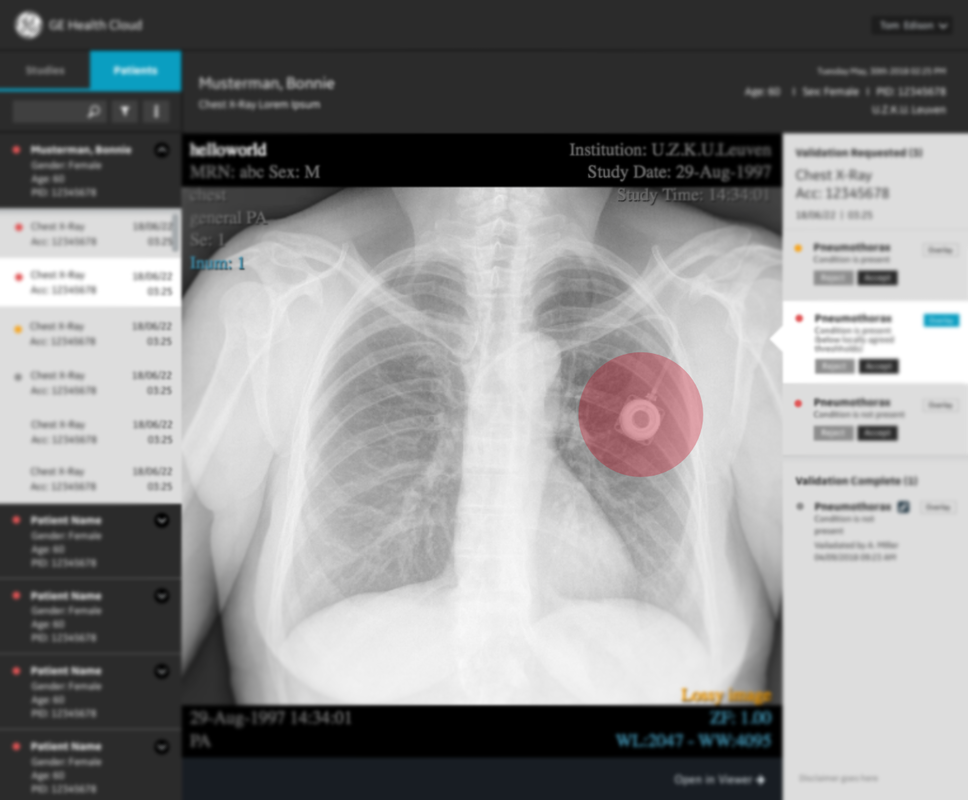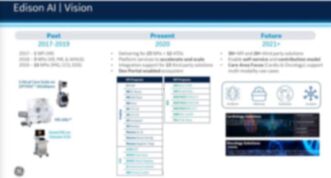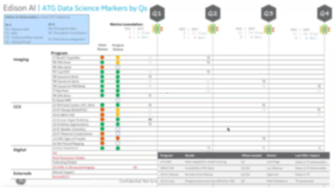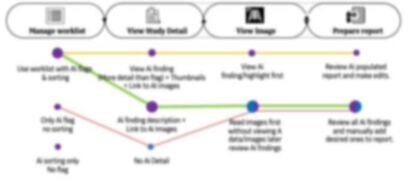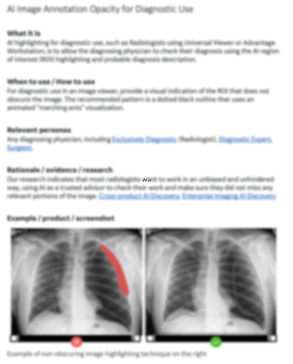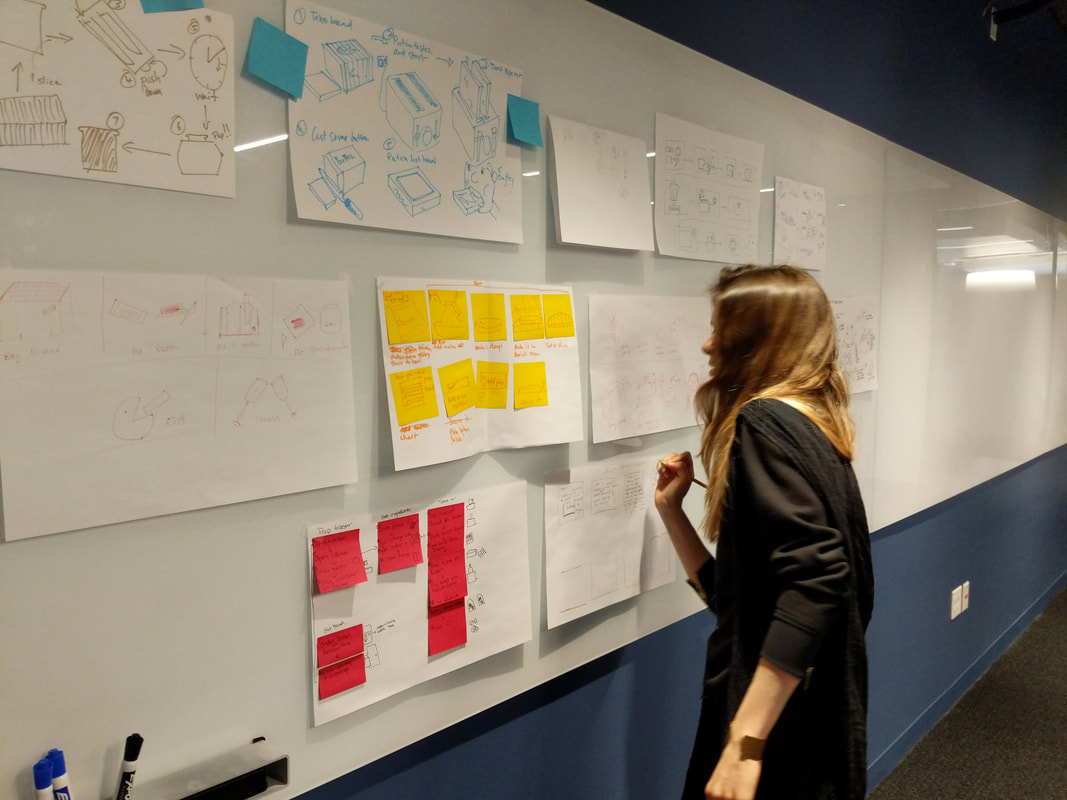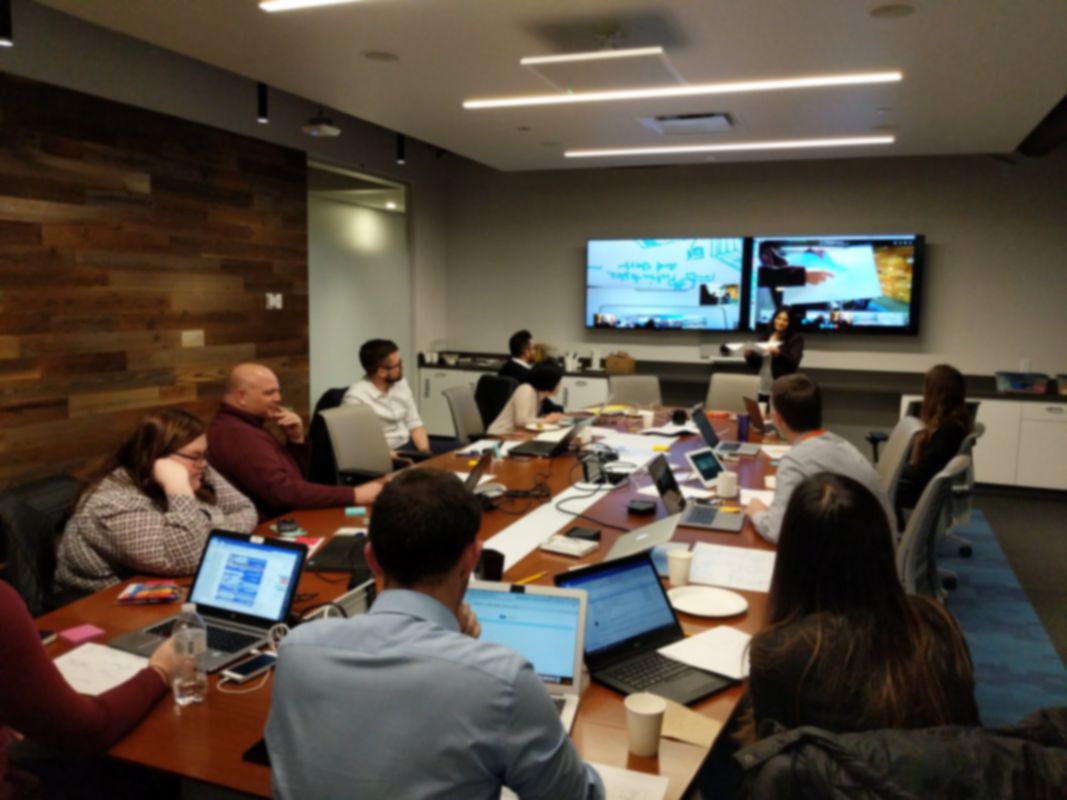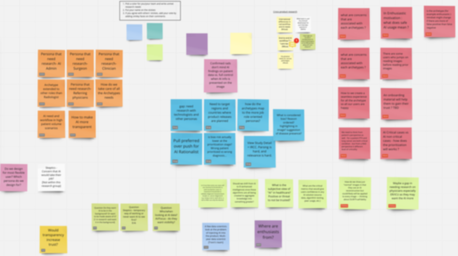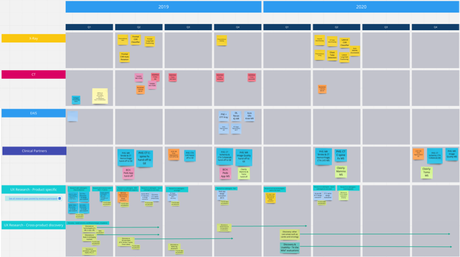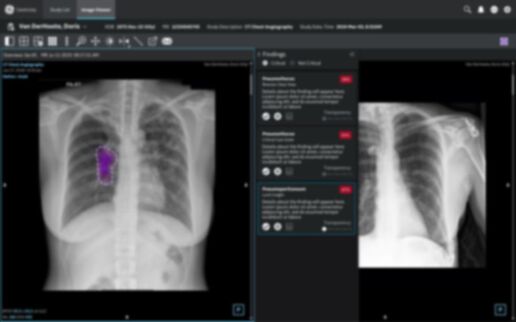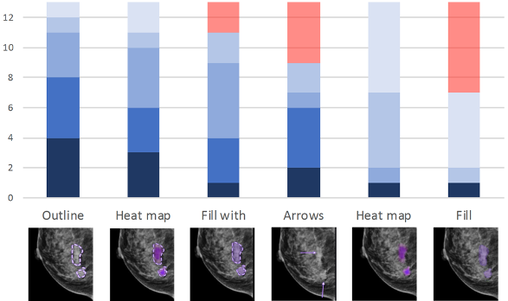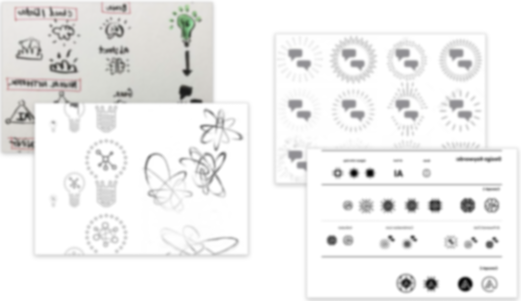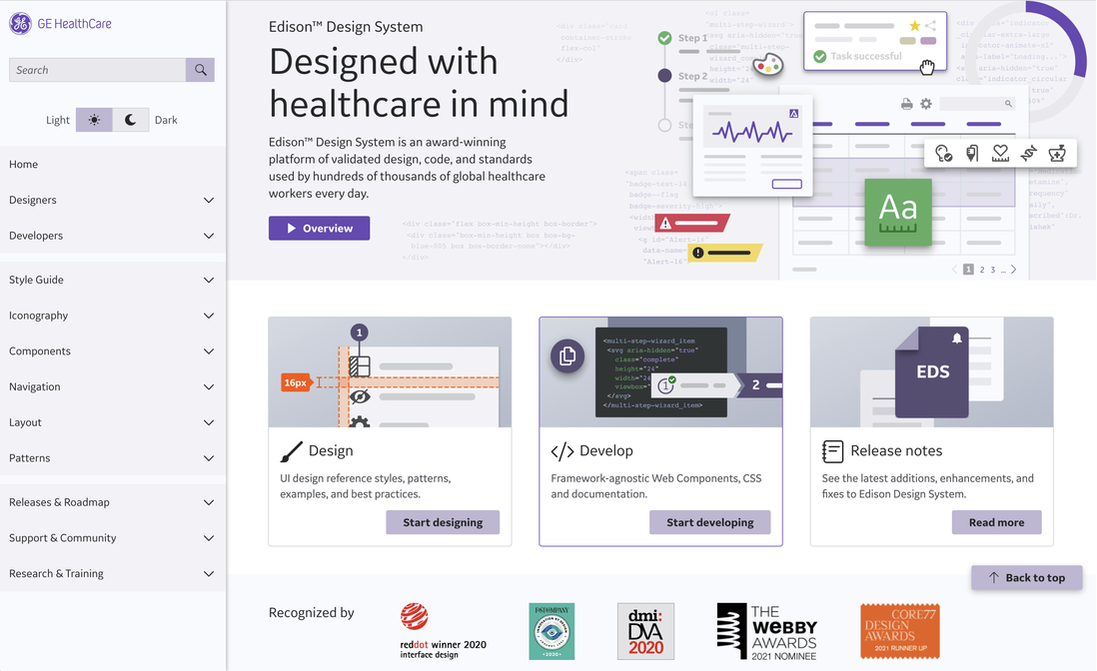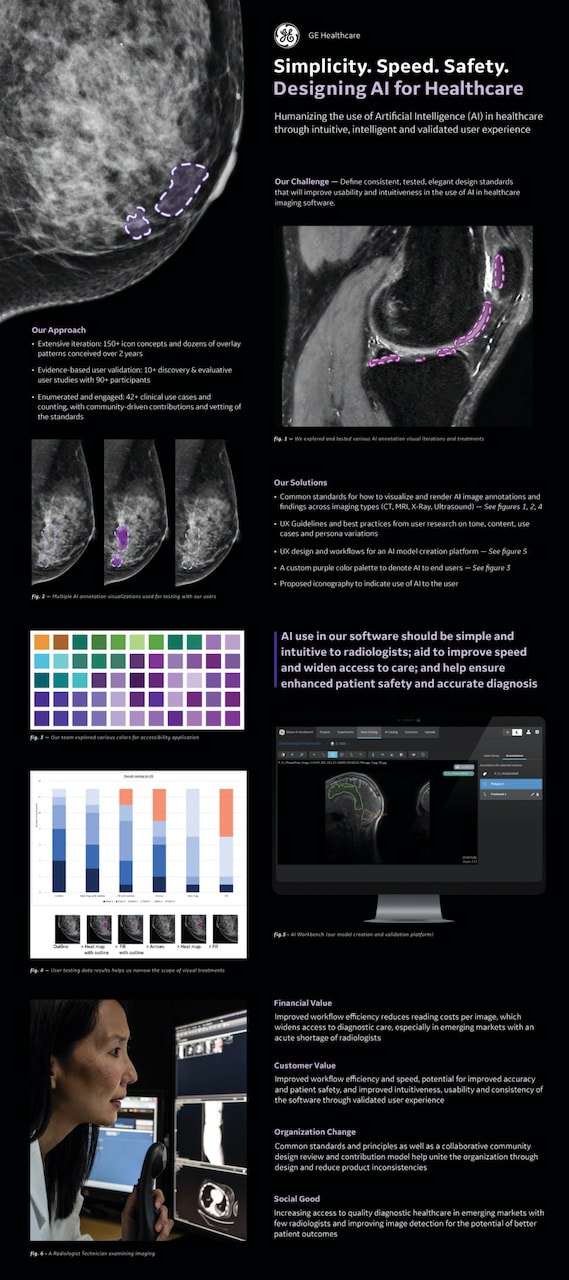Some images blurred for confidentiality reasons
|
|
Situation
My UX team's charter was to create the GE Healthcare AI platform, and support strategic AI solutions, such as Edison Smart Scheduler for administrators and Xray Critical Care Suite for healthcare providers. Problem However, AI experiences across GE products (ultrasound, Xray, MRI, radiology software, etc) were inconsistent in terms of editorial, notifications, and visual display of AI findings, resulting in unpredictable experiences for healthcare providers, and a lack of an AI brand for GE. My Role As Director of UX, drove a strategy shift with exec leaders, led workshops, & created first design patterns. Duration 2 months to create v1 patterns. 6 months to adopt v2 patterns. |
|
To start, I drove a shared understanding with AI platform & product team leadership, that a unified UX for AI across products would create more value for GE and our users:
The platform execs initially said design was up to the implementing product teams: the AI platform was just a service. However, after meeting with with the leadership of the 23 product teams creating AI features, I had broad commitment to adopt standards. I used the product team commitment, to gain agreement from the platform execs on the value of UX alignment, and agreement that the platform org had the best cross-portfolio visibility for driving design governance. |
|
But in order to be effective in aligning teams and creating interaction standards, we needed to know how healthcare providers perceived the value of AI, how they wanted to engage with it, and how they were currently using AI if at all.
My team led the first AI research at GE, with global healthcare providers in India, Europe, and the US, across multiple healthcare institutions. We learned that receptivity to AI, as well as visual & notification preferences varied by region, hospital policy, and provider workload. We distilled these and other findings into a simplified core workflow and a set of archetypes. Based on this research I created a first draft of visual design, editorial, and interaction guidelines, for use in an upcoming workshop. |
|
I then led a 2-day workshop with worldwide Product and UX leaders, sharing our research, reviewing our draft guidelines, and ideating on how to broaden and improve our guidelines.
We built a unified roadmap of AI features across product teams, prioritized next steps for design and research, then aligned on dates and expectations. We published the first version of the AI standards on eds.gehealthcare.com, obtained broader company feedback, and began executing against the agreed design and research plan. |
|
Based on the agreed roadmap, my UX team and I led multiple design and research activities: a company-wide AI icon challenge, AI visual design working group, and user research with radiologists.
Some of our design challenges were: showing AI results without obscuring the diagnostic image; thinking globally, to represent AI without using "A" & "I"; and, aligning AI severity with hospital policy and notification preferences. Based on the workshops, design ideation, and deeper research with radiologists, we broadened and refined our visual standards, notification guidance, and editorial approach. |
|
All 23 teams building AI features agreed to adopt the standards, and our flagship products Universal Viewer and Xray Critical Care Suite launched with our AI standards.
We also patented three UX designs, published the standards in the Edison Design System, and won a DMI Design Value Award for our AI design process in 2020. An added influential win for UX: the platform product team partnered with us on governance of the AI portfolio, making design implementation part of product strategy. |


